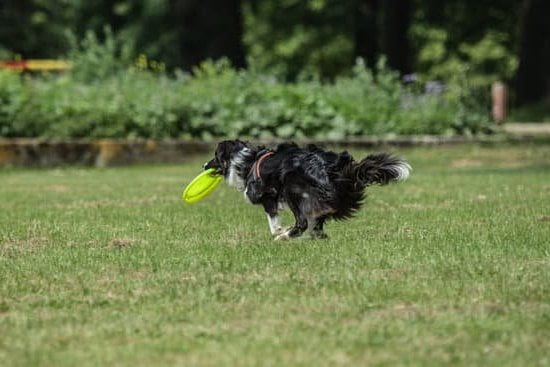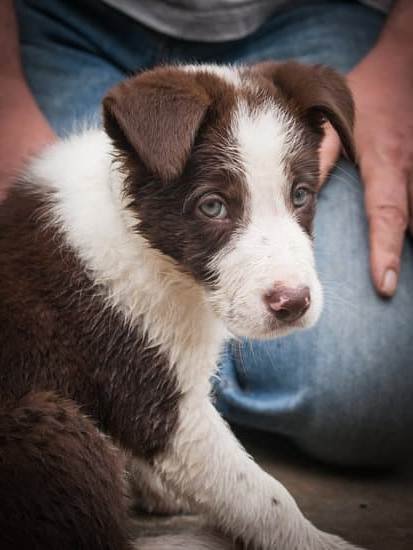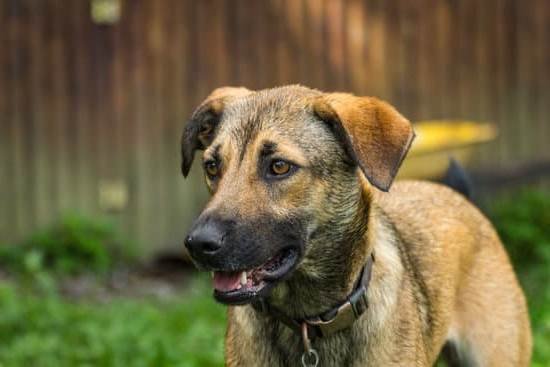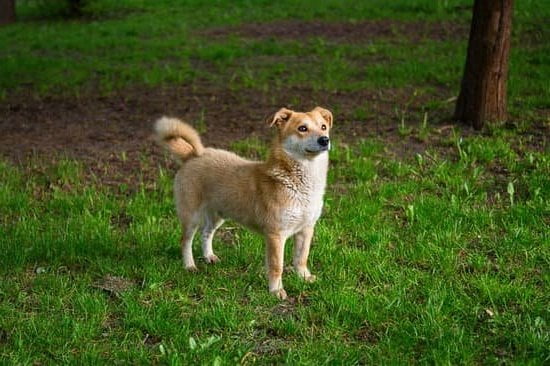Are you wondering, “How can I train my dog to use puppy pads?” Potty training is an essential part of raising a well-behaved and hygienic pet. Using puppy pads can be a convenient solution for indoor potty training, especially for young puppies or senior dogs with limited mobility. In this article, we will discuss the purpose of potty training and the various benefits of using puppy pads to help you successfully train your furry companion.
Potty training is not only about preventing messes in your home but also about teaching your dog proper bathroom habits. By establishing a designated potty area and implementing consistent training techniques, you can effectively communicate where your dog should go to relieve themselves. Puppy pads are highly absorbent and easy to clean, making them a practical tool for managing your dog’s potty needs indoors.
Consistency is key when it comes to potty training. By setting up a routine and using positive reinforcement methods, such as treats and praise, you can encourage your dog to use puppy pads consistently.
Understanding your dog’s individual needs and preferences will also help you choose the right type of puppy pad that suits them best. So, let’s delve deeper into the world of potty training and explore effective strategies for successfully training your dog to use puppy pads.
Understanding the Importance of Consistency in Training
Potty training a dog to use puppy pads requires consistency and patience. By following a routine and setting clear expectations, you can effectively teach your furry friend where they should do their business. Here are some key tips on the importance of consistency in training:
- Establish a regular potty schedule: Dogs thrive on routine, so it’s important to take them out to their designated potty area at the same times each day. This consistency helps them understand when they should go potty.
- Use consistent commands: When guiding your dog to use the puppy pad, use the same cue or command every time. Whether it’s “go potty” or “potty time,” using a consistent phrase will help reinforce the behavior you want.
- Provide positive reinforcement consistently: Whenever your dog successfully uses the puppy pad, be sure to reward them with praise, treats, or whatever motivates them. Consistent rewards will encourage them to continue using the pad.
By maintaining consistency in your training approach, you can effectively teach your dog to use puppy pads. Remember that every dog is different, so be patient and adjust your methods as needed. With dedication and consistency, your furry companion will learn how to use puppy pads in no time.
Remember that accidents may happen during the training process. Stay calm and patient when dealing with setbacks, and never punish your dog for accidents. Instead, focus on reinforcing positive behavior and continue with consistent training efforts. In time, your dog will understand what is expected of them when it comes to using puppy pads.
If you find yourself feeling frustrated or struggling with the training process, don’t hesitate to seek assistance from a professional dog trainer. They can provide personalized guidance on how best to train your specific pet based on their unique needs and behaviors. Embracing consistency in training is key to success when teaching your dog how to use puppy pads effectively.
Choosing the Right Type of Puppy Pad for Your Dog’s Needs
When it comes to potty training your dog to use puppy pads, one of the crucial steps is choosing the right type of pad that suits your dog’s needs. With so many options available in the market, it can be overwhelming to make a decision. However, understanding your dog’s habits and preferences can help you select the most suitable puppy pad for successful training.
To start with, consider the size of your dog. Larger breeds may require more absorbent and larger pads compared to smaller breeds. The material of the pad is also important – some dogs might prefer a softer texture while others may not have a preference. Additionally, if you have a puppy or senior dog, there are specific pads designed for their unique needs such as quick absorption or odor control.
Here are some factors to consider when choosing the right type of puppy pad for your dog:
- Size and absorbency level
- Texture and material
- Specific needs such as quick absorption or odor control
By taking these factors into account and observing your dog’s behavior, you can ensure that you provide them with a comfortable and effective potty training experience. Remember, patience and consistency are key when training your dog to use puppy pads effectively.
Setting Up a Designated Potty Area in Your Home
When training your dog to use puppy pads, it is crucial to establish a designated potty area in your home. This will help your dog understand where they are supposed to go when nature calls. Choose a quiet corner or room in your house that is easily accessible to your furry friend. Make sure the area is well-lit and free from any obstacles that may deter your dog from using it.
To create the designated potty area, place the puppy pads in a specific spot within the chosen area. Ensure that the pads are securely placed and won’t move around when your dog steps on them.
You can also use a puppy pad holder to keep them in place and prevent any accidents from occurring. Remember, consistency is key when setting up the potty area – always bring your dog to the same spot whenever it’s time for them to go.
One helpful tip for setting up a designated potty area is to associate a cue word or phrase with the area. Use this cue every time you bring your dog to the potty spot so that they start associating it with going potty. Eventually, just saying the cue word will trigger them to relieve themselves in that specific location. Positive reinforcement, such as treats and praise, can also be used each time your dog successfully uses the designated potty area.
Remember, patience is essential during this training process. Some dogs may pick up on using puppy pads quickly, while others may take more time. Stay consistent with bringing them to their designated spot, provide positive reinforcement, and be understanding of any setbacks along the way. With dedication and persistence, you can successfully train your dog to use puppy pads in no time.
| Training Tip | Description |
|---|---|
| Use Cue Words | Associate a specific word or phrase with the designated potty area |
| Positive Reinforcement | Reward your dog with treats and praise when they use the puppy pad correctly |
| Persistence Is Key | Be patient and consistent in bringing your dog to their potty spot for successful training |
Using Positive Reinforcement Techniques to Encourage Your Dog to Use Puppy Pads
Positive reinforcement is a powerful tool when it comes to training your dog to use puppy pads. This method involves rewarding your dog with treats, praise, or playtime every time they successfully use the puppy pad for potty time. By associating using the pad with positive experiences, your dog will be more motivated to repeat the behavior. Remember to give the reward immediately after your dog uses the puppy pad to reinforce the connection between the action and the reward.
Consistency is key when using positive reinforcement in your training efforts. Make sure to stick to a regular schedule for potty breaks and always praise and reward your dog when they use the puppy pad as intended. Additionally, be patient and understand that accidents may happen during the training process. Avoid scolding or punishing your dog for mistakes as this can create fear and anxiety around potty training. Instead, focus on encouraging and reinforcing positive behaviors.
Another effective technique is clicker training, where you use a clicker device to mark desired actions before giving a treat. This clear communication can help speed up the learning process for your dog in understanding what behavior you are rewarding them for. Remember that every dog is unique, so it may take some trial and error to figure out which positive reinforcement techniques work best for your furry friend.
| Positive Reinforcement Techniques | Benefits |
|---|---|
| Rewarding with treats, praise, or playtime | Motivates dogs to repeat desired behavior |
| Clicker training | Clear communication for fast learning |
Dealing With Accidents
Accidents are an inevitable part of the potty training process when teaching your dog to use puppy pads. It’s important to remember that setbacks are normal and should be expected, especially during the initial stages of training. How you react to accidents can significantly impact your dog’s progress and overall success in learning to use puppy pads effectively.
When accidents happen, it’s crucial to remain calm and avoid punishing your dog. Instead, focus on addressing the situation promptly and reinforcing positive behavior moving forward. Clean up any messes thoroughly using a pet-safe cleaning solution to eliminate any lingering odors that may attract your dog back to the same spot for future accidents.
It’s also essential to reassess your training routine and identify any potential factors that may have contributed to the accident. This could include not providing enough opportunities for your dog to go potty, using the wrong type of puppy pad, or inconsistencies in your training approach.
By pinpointing these issues, you can make necessary adjustments to prevent future accidents and reinforce proper potty habits in your dog. Remember, consistency is key when it comes to successful potty training with puppy pads.
Gradually Transitioning Your Dog From Puppy Pads to Outdoor Potty Training
Transitioning your dog from using puppy pads indoors to outdoor potty training is an important step in their development. While puppy pads can be convenient for indoor use, the ultimate goal is for your dog to eliminate outdoors where it is most natural for them. Here are some tips on how to smoothly make this transition:
Starting the Transition
To begin transitioning your dog from puppy pads to outdoor potty training, start by gradually moving the puppy pad closer to the door that leads outside. This helps your dog associate going potty with being outside. Once your dog consistently uses the pad near the door, start taking them outside immediately after they eliminate indoors.
Establish a Routine
Consistency is key when transitioning your dog to outdoor potty training. Establish a regular schedule for bathroom breaks, such as first thing in the morning, after meals, and before bedtime. Take your dog out to the same spot each time so they can recognize it as their designated potty area.
Use Positive Reinforcement
Just like with using puppy pads, positive reinforcement plays a crucial role in outdoor potty training. Praise and reward your dog every time they successfully go potty outdoors. This will help reinforce the behavior and encourage them to continue eliminating in the right place.
By following these steps and being patient with your furry friend, you can successfully transition them from using puppy pads indoors to outdoor potty training. Remember that every dog learns at their own pace, so consistency and positive reinforcement are essential in this process. With time and effort, your pup will become fully trained to go potty outside.
Troubleshooting Common Issues in Training
Dealing With Avoidance Behavior
One common issue that dog owners face when training their pets to use puppy pads is avoidance behavior. This can be frustrating for both the owner and the dog, but it’s important to remain patient and consistent in addressing this issue. If your dog is consistently avoiding the puppy pad, it may be helpful to reassess the location of the pad. Make sure it’s placed in a quiet, accessible area where your dog feels comfortable.
Additionally, pay attention to your dog’s body language and schedule. If you notice that your pet has a specific time when they usually need to go potty, try to anticipate this and encourage them to use the puppy pad at that time. Positive reinforcement is key in addressing avoidance behavior – praise and reward your dog when they successfully use the pad, even if it’s just a small step in the right direction.
Handling Overuse of Puppy Pads
On the flip side, some dogs may develop a habit of overusing puppy pads, leading them to rely on them exclusively instead of transitioning to outdoor potty training. To avoid this issue, slowly start reducing the number of available pads in your home. Gradually increase the distance between each pad until eventually, there is only one designated spot for your dog to use.
If your dog continues to overuse puppy pads even after reducing their availability, consider limiting access to them when you’re not actively supervising your pet. This will encourage them to hold their bladder until they have access to the pad again. Remember that consistency is key – don’t give in and provide extra pads if your dog whines or begs for them.
Seeking Professional Help
If you’re struggling with troubleshooting common issues in training despite consistent efforts on your part, it may be beneficial to seek assistance from a professional trainer or behaviorist. They can provide tailored advice based on your specific situation and help identify underlying reasons for your dog’s behaviors. Remember that every dog is unique, so what works for one may not work for another – don’t hesitate to ask for help if needed.
Conclusion
Overall, training your dog to use puppy pads can be a challenging but rewarding process. It is essential to remember that consistency is key when it comes to potty training. By following the steps outlined in this guide, such as choosing the right type of puppy pad and setting up a designated potty area, you are on the right track to successfully training your dog.
Using positive reinforcement techniques is crucial in encouraging your dog to use puppy pads. Rewarding good behavior and being patient with setbacks will ultimately lead to success in training. Remember, accidents will happen, but it’s important to remain calm and handle them with understanding.
As you gradually transition your dog from using puppy pads to outdoor potty training, be sure to celebrate progress and continue to reinforce good habits. Troubleshooting common issues may arise, but with perseverance and determination, you can overcome them. In conclusion, patience is key in the training process. Stay consistent, be positive, and most importantly, show love and understanding towards your furry companion as you navigate through this journey of potty training.
Frequently Asked Questions
How Do I Get My Dog to Use Puppy Pads?
To get your dog to use puppy pads, it is important to place the pad in an easily accessible spot for your pet. You can also use positive reinforcement by rewarding your dog with treats or praise when they use the pad.
How Do I Attract My Dog to Pee Pad?
Attracting your dog to pee pad can be done by using a specific cue word or phrase every time you take them to the pad. You can also try rubbing a soiled pad on a clean one to transfer the scent, which can encourage your dog to use it.
How Long Does It Take to Train a Puppy on Puppy Pads?
The time it takes to train a puppy on puppy pads varies depending on the individual dog. Generally, it can take anywhere from a few weeks to several months for a puppy to consistently use the pads. Consistency, patience, and positive reinforcement are key in successful training.

Welcome to the blog! I am a professional dog trainer and have been working with dogs for many years. In this blog, I will be discussing various topics related to dog training, including tips, tricks, and advice. I hope you find this information helpful and informative. Thanks for reading!





